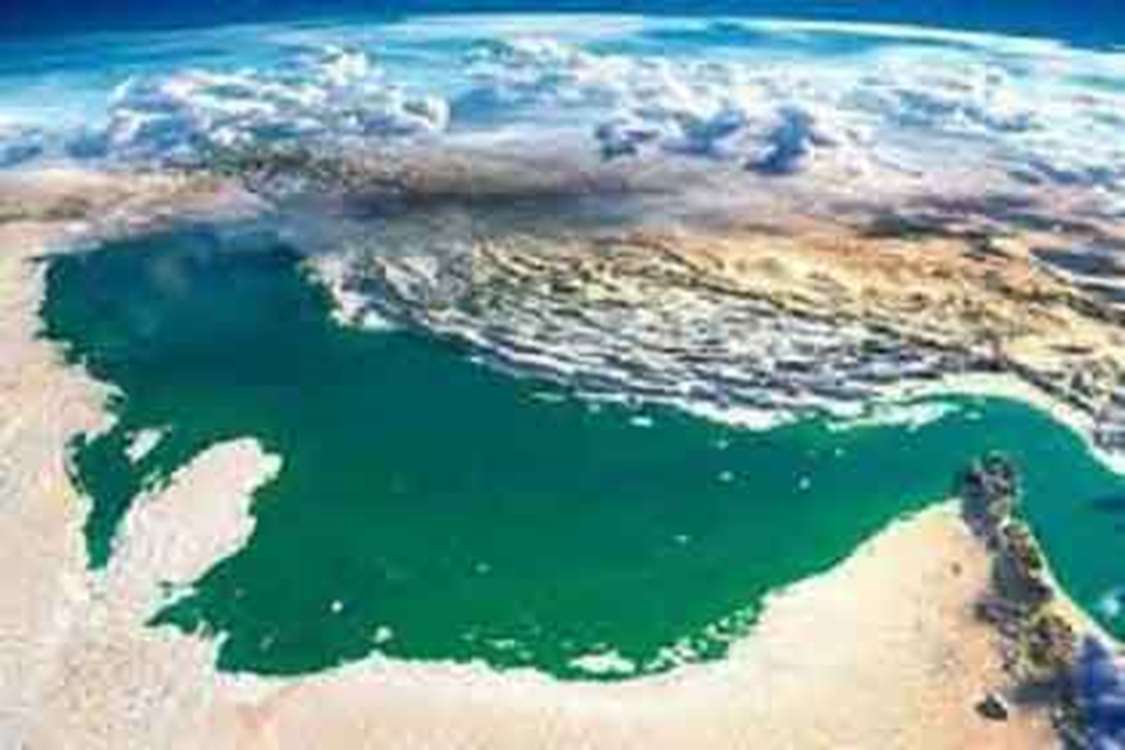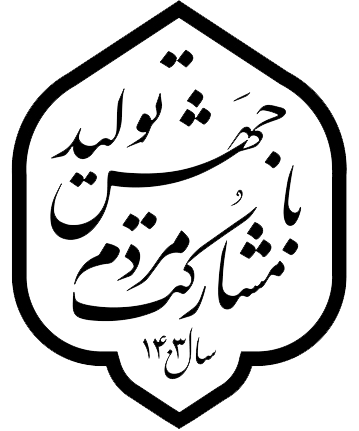Celebrating the National Day of Persian Gulf

Celebrating the National Day of Persian Gulf
A virtual specialized scientific meeting was held at the
Persian Gulf and Oman Sea Ecology Research Institute (Bandar Abbas) to
celebrate Persian Gulf National Day.
According to the public relations office of the Persian Gulf
and Oman Sea Ecology Research Institute - Bandar Abbas, on the occasion of the
Persian Gulf National Day, a specialized scientific meeting with a speech by
Dr. Sharif Rouhani, Advisor and Deputy Director of Iranian Fisheries Science
Research Institute, Dr. Taghavi, Advisor to the President, Dr. Lak, Director of
the Research Institute for Earth Sciences and Dr. Mortazavi, Head of the
Persian Gulf and Oman Sea Ecology Research Institute, with the presence of
heads and experts of research centers affiliated with Iranian Fisheries Science
Research Institute, experts and managers of executive organizations like
fisheries institutes and Hormozgan Department of Environment and a large number
of academic members and students was held virtually on May 10 under the
management of the Persian Gulf and Oman Sea Ecology Research Institute.
In his opening remarks, Dr. Sharif Rouhani, congratulating
the National Day of the Persian Gulf, described this aquatic ecosystem with
strategic reserves, the third-largest gulf in the world with an area of about
240,000 square kilometers and an average depth of 36 meters and a maximum of 94
meters surrounded by 8 countries.
He pointed out that this region is the main road of the
world's oil carriers with more than 800 platforms and oil and gas facilities
and 25 oil terminals and traffic of about 25,000 large tankers that transport
about 60% of the world's oil through the Strait of Hormuz. "The presence
of large military bases and vessels, the movement of nuclear submarines and
naval maneuvers can cause fragility and limitation of this ecosystem," he
said. It is also said that after the Vietnam War, the worst environmental
damage was caused by the Iraq-Kuwait war in 1991, which led to the entry of
more than 10 million barrels of oil into the Persian Gulf ecosystem with an
area of 700 square kilometers.
Dr. Sharif Rouhani pointed to the high economic growth in
the region due to the existence of oil reserves and ecotourism and added:
"The UAE has created the world's largest artificial island on its shores,
which has changed land borders and caused great stress to the region's
ecosystem.”. At the same time, high traffic of ships, tankers, and fuel
vessels, depletion of ships' ballast water, and the presence of desalination
plants affecting water salinity, destruction of marine aquatic habitats,
mangrove forests and coral reefs are other ecological risks for the Persian
Gulf ecosystem. Dr. Sharif Rouhani considered the lack of treatment or
incomplete treatment of municipal and industrial wastewater in the neighboring
countries, the existence and development of nuclear power plants, global
warming, and climate change as other threatening factors of the Persian Gulf
ecosystem. Referring to the weakening of relations with ROPME, this official
called for continued cooperation between the countries of the Persian Gulf to
produce and exchange information in various fields, especially pollutants,
fishing, invasive aquatic species, the effects of climate change, culture,
education and promotion, development of non-governmental organizations and
development of scientific societies. He called it necessary to reform the
governance of the exploitation of Persian Gulf reserves to move towards a green
economy and maintain the stability of the Persian Gulf ecosystem, the union of
countries in the region and legislation to pay green taxes for all marine
pollutants and industries, He added that the tax should be spent on developing
research, monitoring and rebuilding reserves. Dr. Sharif Rouhani said that
fishing is currently above the recoverable capacity, which has been
overshadowed by political issues and social problems. He also mentioned the
need to maintain the environmental health of the mangrove ecosystem and coral
islands and continued: "In the field of aquaculture development,
especially fish farming in cages, it was mentioned that the development of this
industry should be done with careful studies and constant monitoring. Also,
uneaten food and waste should be managed and eliminated in order to have
sustainable ecosystems and production. For each ton of farmed fish produced in
sea cages, 44 kg of nitrogen is produced. 20 micrograms per liter of nitrogen
is harmful to mangrove trees and coral reefs. Farmed fish waste, medicinal
chemicals used in cages, accumulation of organic matter are some of the
significant cases in the fish farming industry in cages, which can cause algal
blooms in the area."
Referring to the capabilities of the Iranian Fisheries Science
Research Institute, he emphasized: "This institute along with three other
research institutes and their affiliated research stations on the northern
shores of the Persian Gulf and 10 research institutes and research centers in
other provinces has very valuable scientific activities and plays a key role in
maintaining and the protection of Persian Gulf ecosystem.
Dr. Taghavi, the consultant of the institute talked about
the necessity of socio-economic analysis of fishing for shrimp vessels in the
waters of the Persian Gulf. He referred to the organizational frameworks of
socio-economic studies at three levels before production, during, and after
production, and considered the environmental, social, economic, and governance
components in these studies necessary. Among the indicators of the social
sector, he pointed at food security, income from fisheries, protein, livelihood
dependence, and the amount of fish produced from fisheries. According to Dr.
Taghavi, fishing in the sea, fishing in inland waters, breeding warm-water and
cold-water fish, marine culture, and shrimp farming are indicators of the
environmental sector and the amount of employment, investment, income, and
export. The cost of fishing and aquaculture production are indicators of the economic
sector.
Dr. Taghavi said that factors such as fishing pressure,
illegal fishing, climate change and diversity, loss of social capital, advances
in science and technology, distortions of supply and demand systems, physical
infrastructure, health services, and overall population change affect fishing
and aquaculture. He considered the indicators of governance role including
policies related to the transfer of management rights and responsibilities,
participation of civil institutions, rights of fishermen and fish farmers,
tenure and diversity, and characteristics of influential institutions, and
further, said that fishing units in the country include benthic, large pelagic
fish, shrimp, small pelagic fish, Lanternfish, Kilka fish, bony fish and
sturgeon fishing and various aquaculture units include salmon, sturgeon,
warm-water fish farming, cage farming, and shrimp farming. He referred to the
important need for socio-economic data and information to assess the cost
structure and efficiency of the fishing economy, livelihood conditions and
employment in fishing, profitability, investment and demography, and ownership
structure in fishing, and said: “Information on Socio-economic studies is used
to provide appropriate solutions to resolve conflicts, food security and
comprehensive development of fisheries planning and management, improve
fishermen's income, rebuild reserves, promote equity in the distribution of
employment and income, participate in increasing fish production and supply it
to people.” Dr. Taghavi stated that the conducted study shows the variables for
achieving the evaluation objectives are floating ownership, fishing effort,
employment, fish trade, variable costs, fixed costs, investment, debt and
subsidies, income, and demography. He said that components of the
Socio-economic study are based on the questionnaire including 12 paragraphs and
about 75 questions, which he then explained in detail. Dr. Taghavi referred to
the results of the number of shrimp vessels in Hormozgan and Bushehr provinces
in 2018 according to FAO standards in different classes, personnel costs,
number of permanent and temporary employees, fishing rate, the fuel cost of
vessels, maintenance costs, per capita income of each vessel and the average
age of employed personnel and their level of education, and then presented a
comparison table of Bushehr and Hormozgan provinces. Dr. Mortazavi, who
described the situation of chemical pollutants in the Persian Gulf ecosystem,
pointed to the semi-closed and low water cycle in this ecosystem, which leads
to more effective anthropogenic processes. In addition to the direct entry of
industrial, domestic, and water desalination units effluents, in some Persian
Gulf countries such as Iraq and Iran, chemical pollutants are poured into the Persian
Gulf ecosystem through permanent and seasonal rivers.
In another part of his speech, he mentioned population
growth, economic and industrial development, creation and development of oil
and gas industries, electricity generation, agriculture, maritime transport,
oil spills, and leaks as factors causing pollution in this ecosystem.
Eventually, these pollutants enter the biological cycle of marine organisms and
consequently endanger human health, because the pouring of pollutants into the
sea leads to the water column's involvement in chemical reactions,
sedimentation and the entry of the marine food chain. Dr. Mortazavi pointed out
that the share of studies on heavy metals in Iran is 71%, Kuwait, Saudi Arabia,
and the UAE a total of 12%, Bahrain and Qatar each 8%, and among the 22 metals
and elements studied, the most studies were related to Lead, cadmium, arsenic,
and mercury, and the fish studied were common grouper, sturgeon, strainer and
milk. He continued: "Studies on organic pollutants are limited and the
origin of polyaromatic compounds of hydrocarbons as an important part of
organic pollutants, municipal and industrial wastewater enters directly or
through rivers into the Persian Gulf, which in most cases has concentrations
below the values of regional and global standards, but sometimes we are faced
with scattered hotspots of accumulation of this large family of pollutants.”
In another part of his speech about the pollution caused by
microplastics, Dr. Mortazavi said: “Suspended plastic particles with a size of
fewer than five millimeters are known as microplastics and their origin is very
diverse and can be from municipal and industrial wastewater and waste disposal
sites and enter the human body directly or through the food cycle. The impact of
microplastics on marine ecosystems is wide, these substances can absorb
chemical pollutants and after entering the internal organs of marine organisms
and then hunting, they enter the human food cycle. Microplastics in most fish
affect organs, including muscles, kidneys, swim bladder, ovaries, stomach,
intestines, liver, lungs, and brain. Dr. Mortazavi continued: "Studies on
microplastics in the Persian Gulf are less than the rest of the world."
Most microplastic studies are in marine water and sediments (44%), aquatics
(28%), terrestrial environment (12%), freshwater (9%), and wastewater (7%).
In conclusion, he discussed the achievements of joint
research between the Persian Gulf and Oman Sea Ecology Research Institute and
Iran National Science Foundation under the title of a comprehensive assessment
of the environmental pollution of the Persian Gulf with emphasis on mangrove
habitats and coral islands.
Dr. Lak, Associate Professor of Research Institute of Earth
Sciences, addressed the geological risks of the Persian Gulf coasts and pointed
out the need to pay attention to them in management planning. He considered sea
level rise, sediment-related risks, coastal pollution, and fine dust as the
most important dangers and reminded us of the need to manage them.
In the second part of the meeting, the speakers answered the
questions of the attendees and discussed the important challenges of processing
this vital ecosystem.
https://en.areeo.ac.ir/news/celebrating-the-national-day-of-persian-gulf





